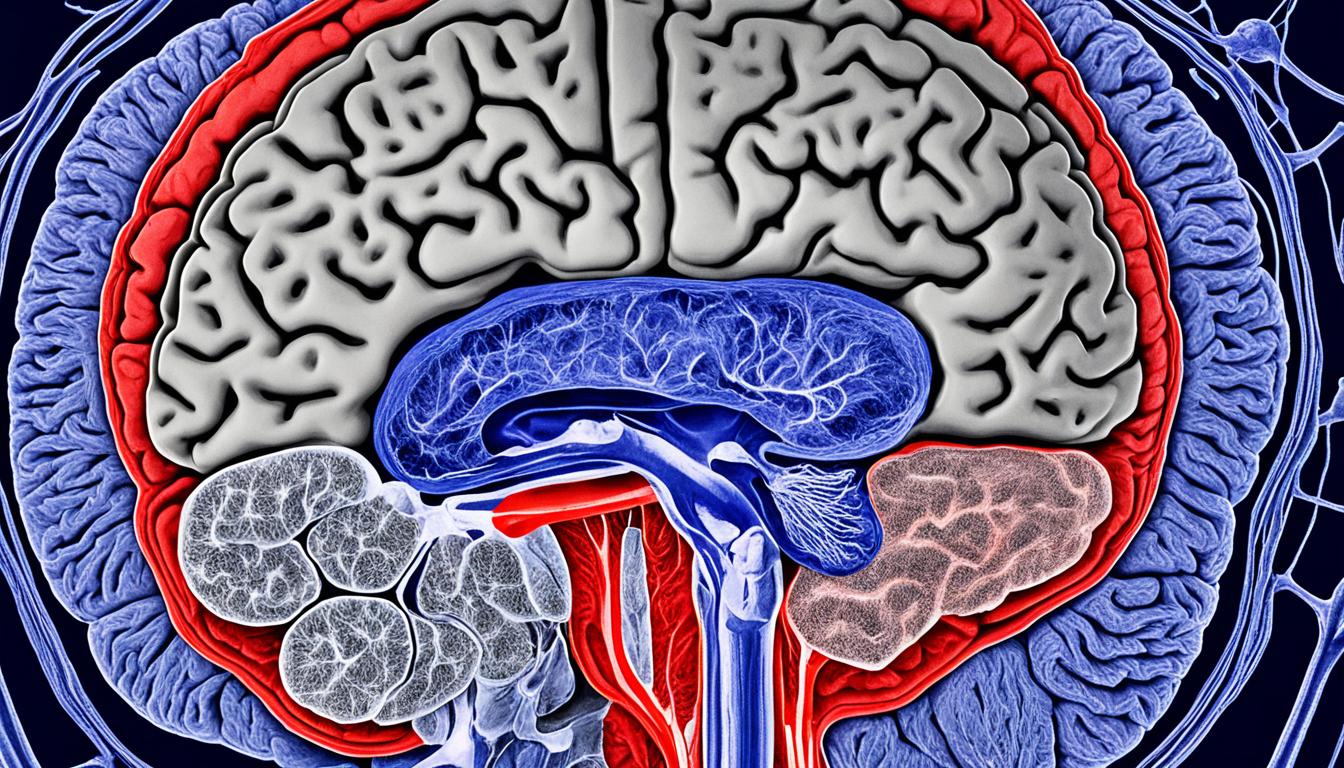Medulloblastoma is a primary CNS tumor. It can start in the brain or spinal cord. This fast-growing grade 4 malignant tumor is common in both kids and adults. But, it’s more frequent in kids. In children, it is the most common malignant brain tumor, making up about 20% of such cases.
It often appears as masses in the cerebellum. This leads to symptoms like headache, nausea, and balance issues. Other symptoms include vision problems and seizures.
The root cause of medulloblastoma remains a mystery. Genetic changes play a role in some instances. These tumors can sometimes spread beyond the CNS. They can affect the bone, lung, or lymphatic system.
The outlook for someone with medulloblastoma varies. It depends on several factors. These include the tumor’s molecular group, its stage, and how much was removed. A patient’s age, general health, and response to treatment also matter.
Treatment options for medulloblastoma mainly involve surgery, radiation, and chemo. There’s also the option to join clinical trials. Research into stem cell therapy shows promising results. This offers hope for better survival rates and outcomes.
Key Takeaways:
- Medulloblastoma is a grade 4 malignant tumor that affects the brain and spinal cord.
- It is the most common malignant brain tumor in children, accounting for about 20% of all pediatric brain tumors.
- Common symptoms include headache, nausea, vomiting, balance issues, vision problems, and seizures.
- Treatment options include surgery, radiation therapy, chemotherapy, and participation in clinical trials.
- Advancements in stem cell therapy and ongoing research offer potential improvements in treatment outcomes.
Medulloblastoma in Children and Adults: Incidence, Diagnosis, and Characteristics.
Medulloblastoma is a common malignant brain tumor mainly seen in children. It makes up around 20% of brain tumors in kids. Diagnosis usually happens between 5 to 9 years of age, more in boys than girls.
It’s very rare in adults, with only about 0.5 cases per million each year. Adults diagnosed with this tumor are usually aged 20 to 40 years. Some genetic disorders make people more likely to get medulloblastoma.
These include Li-Fraumeni syndrome, Gorlin’s syndrome, and Turcot syndrome. They up the risk of developing various tumors, including medulloblastoma.
Symptoms can change based on where the tumor is and its size. They commonly include headaches, nausea, vomiting, trouble with balance, vision issues, and seizures. Any of these signs should lead to a doctor’s check-up, particularly in those with known risks or genetic disorders.
Medulloblastomas are put into types by their look and biology. They can be classical, desmoplastic, with nodularity, or large cell. Molecularly, they fall into SHH, WNT, Group 3, or Group 4. Each type has different genetic and clinical aspects, affecting treatments and outcomes.
Diagnosis of Medulloblastoma
Diagnosing medulloblastoma needs a full evaluation. This includes neurological checks and imaging tests like CT and MRI. Sometimes, a tissue sample or cerebrospinal fluid is needed to confirm the tumor’s existence and details.
Treatment Options
Medulloblastoma treatment combines surgery, radiation, and sometimes chemo. Surgery aims to take out the tumor without worsening neurological problems. After this, radiation targets any remaining cancer cells to lower recurrence risks.
Chemo might also be given, depending on the tumor type and spread. Joining clinical trials gives a chance for new treatments and helps in learning more about the disease. This all aims to improve how patients do.
Studies and trials are ongoing to find better ways to treat medulloblastoma. Advances in personalized and targeted medicine could lead to better outcomes. Staying updated with new treatments offers hope for those with this challenging tumor.
Image: Medulloblastoma is a malignant brain tumor that primarily affects pediatric patients.
Advancements in Medulloblastoma Treatment: Stem Cell Therapy and Future Outlook.
Researchers and doctors are looking for better ways to treat medulloblastoma, a kind of brain tumor. There have been great strides in treating this cancer. One exciting method being tested is stem cell therapy in clinical trials.
The survival rate for medulloblastoma has improved, now at 80.6% over five years. However, prognosis depends on various things like tumor type, its stage, and patient health. Surgery to remove the tumor is still the main option.
After surgery, patients might get radiation therapy. This is to kill remaining cancer cells. Chemotherapy could also be needed, especially if the cancer has spread. Trials are key to finding new and better treatments.
The future of treating medulloblastoma looks bright. Research is focusing on personalized and targeted treatments. These treatments aim to improve how patients with medulloblastoma recover and change cancer care for the better.

